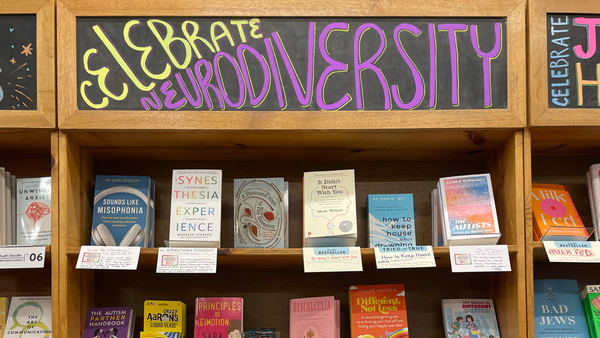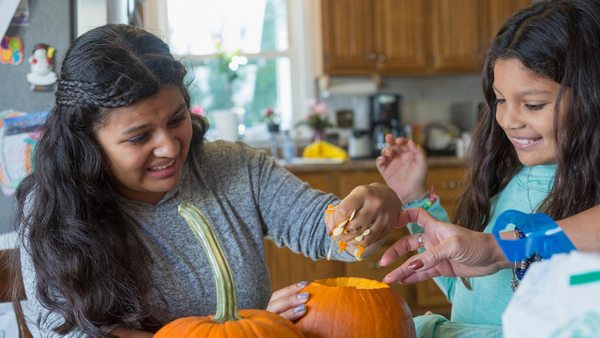By Tiffany “TJ” Joseph, Bened Life Neurodiversity & Disability Specialist
The grocery store: It causes me so much trouble, but also is a portal to feeding my family. I guess you could say that I have a mostly-hate/sometimes-love relationship with this type of shopping experience.
What plagues me most about shopping anywhere is the sensory attack I experience:
- Overly bright and noisy fluorescent lights
- All of the various mixtures and sudden changes in smells from the produce, deli, bakery, cleaning product aisles, as well as fast-moving human scents, even if they are pleasant
- The random and sudden changing nature of sounds, like shelf stocking, cash registers beeping, squeaky wheels on carts, items crashing to the ground by accident, multiple conversations going on, kids crying or screaming randomly, overhead speaker announcements, etc.
- Navigating past people, having to use my voice when uncomfortable, looking near people’s faces, or making eye contact to communicate that I need passage or move out of their way
All of this is going on in my sensory system background (haha, just kidding – I have no background, it’s always foreground) processing while I am trying to make sure I stay on a budget, get what I need for my family, and have enough fight in me not to leave before I am done. What helps me the most is going to stores where I know the layout. I don’t just mean the brand of the store – the exact location has to be the same. I have to know what that store sells in which aisles and when their deals are right for me.
If I have to go to a new store or location, I don’t plan on staying long. I usually do a quick walk around, seeing where things are first before I shop. Once I actually start shopping, I start in the produce section then walk up and down each aisle. I don’t usually need a list because, in my neurodivergent family, we all have our safe foods and things we absolutely will not eat. This makes shopping a bit easier because I know exactly what to get. I also know when I can try and be adventurous with something new they will be receptive to trying.
Instead of lists, I shop by experience now. Due to this, it makes shopping in new places extra confusing, frustrating, and fatiguing. However, I do have some tricks to help keep me there for as long as possible so I can get everything in one trip.
Sensory devices
I wear large, noise-canceling Bluetooth headphones so I can listen to podcasts, audiobooks, YouTube, or music while shopping. I don’t go unless my headphones and device have at least 50% charge each.
My regular prescription glasses are tinted so they block light inside and outside. I also don’t go inside unless I have these.
If any of these pieces are missing, I go back and get them or wait for them to charge.
I simply refuse to waste my time anymore by trying to push through without these when I know I am going to leave too soon without fail. This means I will have to make another trip soon, ugh. I have aptly named this ABC syndrome, or abandoned cart syndrome. I know that’s not how initials really work but…yes, I am a HROSEWAFSCP: habitual runner out of store even with a full shopping cart person. I have been changing my ways though and not letting it get to that point.
I always have a few fun sensory items. Gyrings, Rubik’s cubes, and silicon sponges are among my favorites. They provide instant relief usually from sudden sensory irritation.
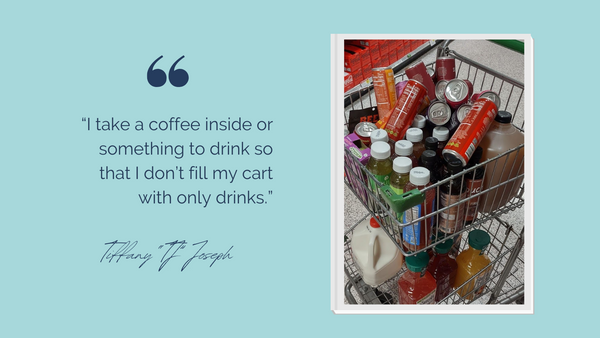
Coffee
I take a coffee inside or something to drink so that I don’t fill my cart with only drinks. When I'm thirsty, it’s like I forget that food exists (see real photo above of this annoying consequence).
Gamify the experience
I try to use logic as much as possible to focus on something other than the sensory load. For instance, I love comparing prices and looking for patterns in sales. This allows me to know exactly when to shop at different stores for different products based on their patterns.
I didn’t know this at first, but using the math and observation parts of my brain helps me avoid thinking about the sensory stimuli. What’s great is that once I do learn a specific company and then specific stores, that information helps me get in and out very fast. That in and of itself helps me avoid a sensory storm by shaving off time. Gamifying the stores helps me have a little bit of fun, so I can’t say I hate everything about it.
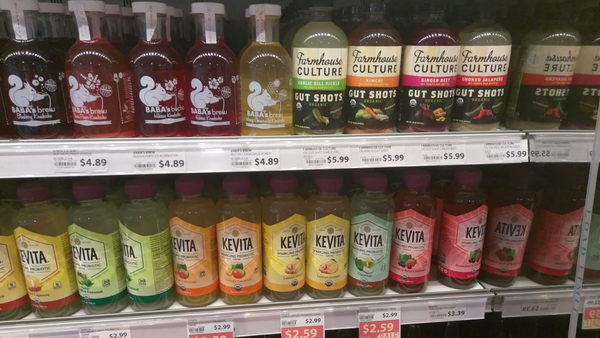
Visual delight
I take notice of the beautiful settings and displays in grocery stores. If I like them enough, I take pictures. I also get to line up items in my cart or on the belt during checkout and add to that beauty or pleasant visual stimuli.
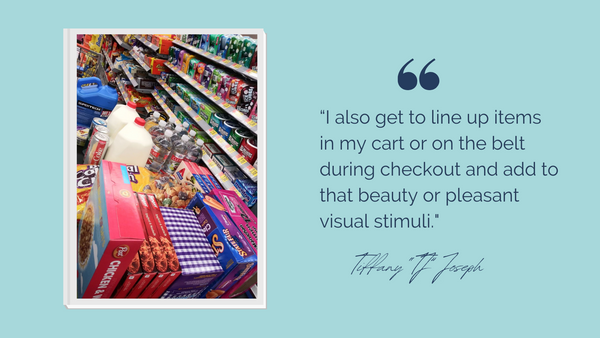
Park in the same spot
I park in roughly the same spot or area every time. This is embarrassing, but I cannot find my way back to the same point and don’t have any kind of spatial sense. I have on more than one occasion called the police because my car was stolen only for them to find my car in the parking lot. My brain just doesn’t understand things like distance and direction.
Because of this, I now have a strict policy of parking my vehicle in the exact same space every single time. It’s generally the area I parked the first time I ever went to a specific store. My muscle memory gets set and my brain automatically thinks I only park there ever. So I just do. This has saved me so much time and embarrassment.
Keys on the cart
I attach my keys and wallet to the child safety belt (see real photo). Another confession: Too many times than I would like to admit, I have come back to my car without my phone, wallet, groceries, cards, or keys. It happened recently when I deviated from this routine of locking my wallet and keys up in the same place. Having those two things always in my sight in the same spot no matter how many groceries are in the cart is key to me remembering to do everything else.
Not having to think of too many things, like where my keys and wallet are when I need to pay or open the car door, is immensely helpful. I have previously spent countless hours looking for lost keys with melting groceries or while standing in freezing rain, locked out of my car (depending on weather and time of the year, of course).
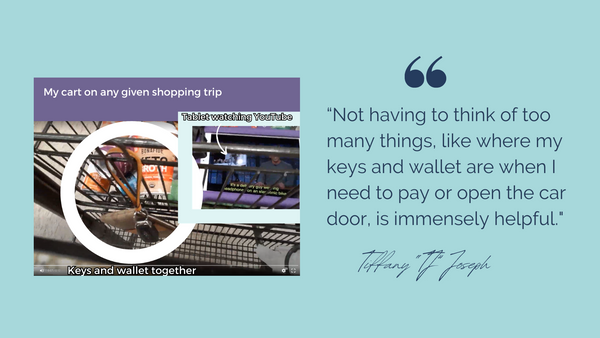
Go alone
I rarely go shopping with anyone else, especially my kids. I am grateful that I can do this; I know not everyone has the option. Once upon a time, I had a kid who would melt down every single time we went to the store. I didn’t mind, but dealing with the sights and sounds of that on top of having to concentrate on one or more kids was just too hard for a long time. I would go with my best friend or my mom if I had to take my kids.
Other people are generally too much sensory stimulation on their own. They want to talk, which is distracting because I have to hear all of the other noise in the store too. Trying to keep up with them is also difficult because they have their own patterns of shopping, and this is also distracting.
Now that my kids are older, they have great shopping skills of their own and have methods of taking care of their sensory needs.
They are helpful because they keep me on track. ADHD sometimes pulls my attention too much. They are pretty knowledgeable about shopping and prices due to social media and online ordering apps. They have more energy than I do and keep me going or finish for me when I can’t.
If all three of them shop together, because one always disappears, the other two keep that one with them, and they seem to enjoy shopping together.
Use delivery or curbside pickup for maximum accessibility
I do love “shopping” in certain cases: bookstores, toy stores, and gadget stores are places I can easily spend hours in without noticing. Electronic or gadget places are often hit or miss though because they can also be very loud and bright. But I will try to suffer through for new technology. That’s worth it to me.
But for the most part, shopping online and getting delivery or doing curbside pickup is most accessible and the least straining for me. I am grateful that these services have stayed around even after the lockdown period of Covid ended in most places. Not only are they still here, but it seems that retailers and other businesses are finding ways to enhance and expand delivery, drive-up, and curbside services.
About the author:
TJ is an Autistic adult working in “accessible education” with teen and young adult Autistic non-speakers. She herself is Hard of Hearing and utilizes many ways to communicate including ASL, mouth words, and high-tech AAC (augmentative and alternative communication). Their passion in the disability space is communication and education rights for people of all disabilities. Find TJ on social media at Nigh Functioning Autism.
Recommended reading:







